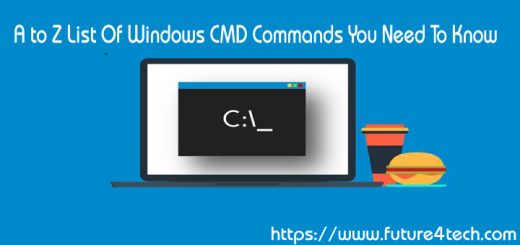CSVDE / LDIFDE – Windows CMD Command
Notice: A non well formed numeric value encountered in /home/future4tech/public_html/wp-content/plugins/crayon-syntax-highlighter/crayon_formatter.class.php on line 118
Notice: A non well formed numeric value encountered in /home/future4tech/public_html/wp-content/plugins/crayon-syntax-highlighter/crayon_formatter.class.php on line 119
Notice: A non well formed numeric value encountered in /home/future4tech/public_html/wp-content/plugins/crayon-syntax-highlighter/crayon_formatter.class.php on line 118
Notice: A non well formed numeric value encountered in /home/future4tech/public_html/wp-content/plugins/crayon-syntax-highlighter/crayon_formatter.class.php on line 119
Import or Export Active Directory data to a file. The syntax of these two commands is identical, the difference being that one works with CSV files and one with LDIF files.
1 2 3 4 5 6 7 8 9 10 11 12 13 14 15 16 17 18 19 20 21 22 23 24 25 26 27 28 29 30 31 32 33 34 35 36 37 38 39 40 41 42 |
Syntax Export to file: CSVDE [-f FileName] [options] LDIFDE [-f FileName] [options] Import from File: CSVDE -i [-f FileName] [options] LDIFDE -i [-f FileName] [options] Key -f Filename Input or Output filename -s servername The server to bind to -c FromDN ToDN Replace occurrences of FromDN to ToDN -v Verbose -j Path Folder to store log files -t Port_Number (default = 389) -? Help Export options -d RootDN The root of the LDAP search (Default to Naming Context) -r Filter LDAP search filter (Default to "(objectClass=*)") -p SearchScope Search Scope (Base/OneLevel/Subtree) -l list Attributes to look for in an LDAP search (comma separated List) -o list Attributes to omit from input (comma separated list) -g Disable Paged Search -m Enable the SAM logic on export -n Do not export binary values Import options -k Ignore 'Constraint Violation' and 'Object Already Exists' errors. To successfully import a file it must contain as a minimum: The DN(distinguished name), DisplayName and ObjectClass Username/Password credentials -a Set the command to run using the supplied user distinguished name and password. For example: "cn=yourname,dc=yourcompany,dc-com password" -b Set the command to run as username domain/password. The default is to run using the credentials of the currently logged on user. |
CSV (comma-separated value) format files can be read with MS Excel and are easily modified with a batch script.
LDIF files (LDAP Data Interchange Format) are a cross-platform standard. This provides a method to populate Active Directory with data from other directory services. (e.g. Oracle Directory Server, eDirectory)
Passwords
For security reasons, neither of these tools will export passwords. When you import an account it is given a null password, if the domain has a password length policy, then the account will be disabled (You can re-enable accounts in bulk with a script)
1 2 3 4 5 6 7 8 9 10 11 12 13 |
Examples Export the whole domain CSVDE -f MyDomain.csv Export a single OU: CSVDE -d "OU=NewYork,DC=F4T,DC=com" -f C:\Demo\exportOU.csv Export all users with a particular surname: CSVDE -f MyUsers.csv -r (and(objectClass=User)(sn=Surname)) Import the whole domain and create C:\MyLogfiles\csv.log and C:\MyLogfiles\csv.err CSVDE -i -f MyDomain.csv -j C:\MyLogfiles\ |

